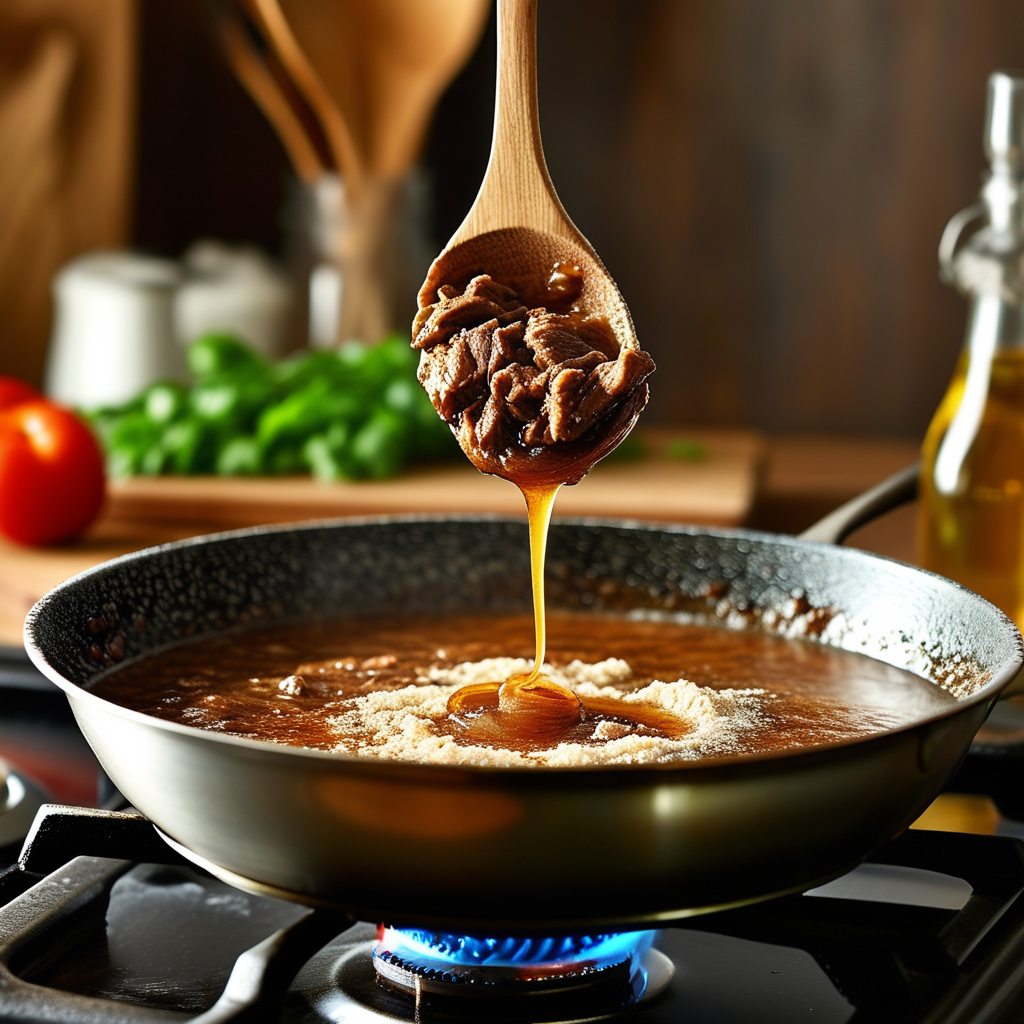Many home cooks ask, « What’s the difference between sawmill gravy and regular gravy? ». Understanding this distinction is key to mastering classic comfort food. While both are delicious sauces, their ingredients, flavors, and uses are worlds apart. This guide is dedicated to providing a clear and complete answer to the question: **what’s the difference between sawmill gravy and regular gravy?**
To dive deeper into the culinary world of gravy, you can check out the traditional dishes that pair well with sawmill gravy.
Both gravies have captured the hearts of many. For further insights into creative uses of various gravies, visit this creative modern adaptations.
Defining Each Gravy to See the Difference
To truly grasp **what’s the difference between sawmill gravy and regular gravy**, we must first define each one separately. Their core components are the foundation of their distinct identities in the culinary world.
What is Sawmill Gravy? A Key Part of the Comparison
Sawmill gravy is a cornerstone of Southern cooking. Its identity is built on a specific set of ingredients that make it fundamentally different from regular gravy:
- Base: Pork sausage and its rendered fat.
- Liquid: Whole milk or cream.
- Thickener: All-purpose flour to create a roux.
- Seasoning: A generous amount of black pepper and salt.
Its characteristically thick, creamy, and peppery flavor makes it a breakfast icon.

What is Regular Gravy? The Other Half of the Equation
In the « sawmill gravy vs regular gravy » debate, « regular gravy » most often means brown gravy. The **difference between sawmill gravy and regular gravy** becomes obvious when you look at its ingredients:
- Base: Meat drippings (from roasted beef, turkey, or chicken).
- Liquid: Stock or broth.
- Thickener: Flour or a cornstarch slurry.
This gravy is a versatile dinner staple, known for a smooth, savory flavor that complements roasts.

The Main Differences: Sawmill Gravy vs. Regular Gravy
Let’s directly compare them to fully answer the question, **what’s the difference between sawmill gravy and regular gravy?**
Ingredients: The Most Obvious Difference
The base ingredients create the biggest **difference between sawmill gravy and regular gravy**. Sawmill gravy uses sausage and milk. Regular gravy uses meat drippings and broth.
Preparation Method: A Tale of Two Techniques
Sawmill gravy is a one-pan dish starting with sausage. Regular gravy is made from the drippings left after roasting meat. This procedural contrast is a key part of **what’s the difference between sawmill gravy and regular gravy**.
Flavor and Texture
Sawmill gravy is thick, hearty, and peppery. Regular gravy is smoother, more savory, and tastes like the roast it came from. The texture is a significant **difference between sawmill gravy and regular gravy**.
Nutritional Profile: Another Difference Between Sawmill Gravy and Regular Gravy
Nutritionally, sawmill gravy is heavier due to the sausage and cream. Regular gravy can be lighter, depending on the fat content of the drippings. This is another important factor when you consider the overall **difference between sawmill gravy and regular gravy**.
How They Are Served: A Cultural Difference
Their culinary roles also highlight their differences. Sawmill gravy is for breakfast classics like biscuits and country-fried steak. Regular gravy is for dinner staples like mashed potatoes and turkey.

FAQ: Answering « What’s the Difference Between Sawmill Gravy and Regular Gravy? »
Here are quick answers to the most common questions on this topic.
- What’s the main difference between sawmill gravy and regular gravy? The base ingredients are the key difference: sawmill gravy uses sausage and milk, while regular gravy uses meat drippings (from a roast) and broth.
- Is sawmill gravy always a Southern dish? Yes, its origins and popularity are firmly rooted in the Southern United States.
- Can you substitute sawmill gravy for regular gravy? Only if you want a completely different dish. The flavors are not interchangeable.
Conclusion: The Final Word on Sawmill Gravy vs. Regular Gravy
In conclusion, the **difference between sawmill gravy and regular gravy** is profound, touching on everything from ingredients to cultural traditions. One is a creamy, rustic breakfast hero; the other is a savory, versatile dinner champion. Now that you know exactly **what’s the difference between sawmill gravy and regular gravy**, you can master both in your kitchen.

- The main difference is the base: sausage/milk for sawmill gravy vs. drippings/broth for regular gravy.
- This core difference affects flavor, texture, and how each gravy is served.
- Knowing the difference helps you make the perfect choice for your recipe.